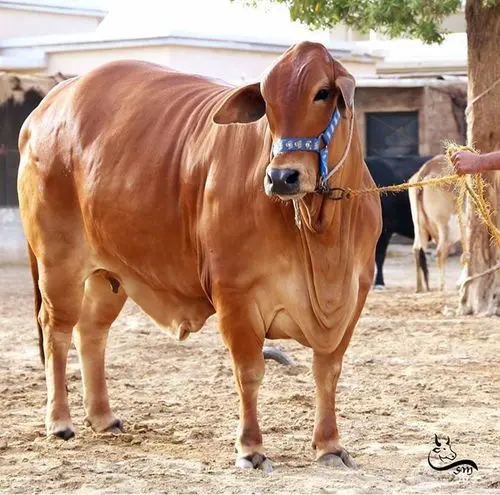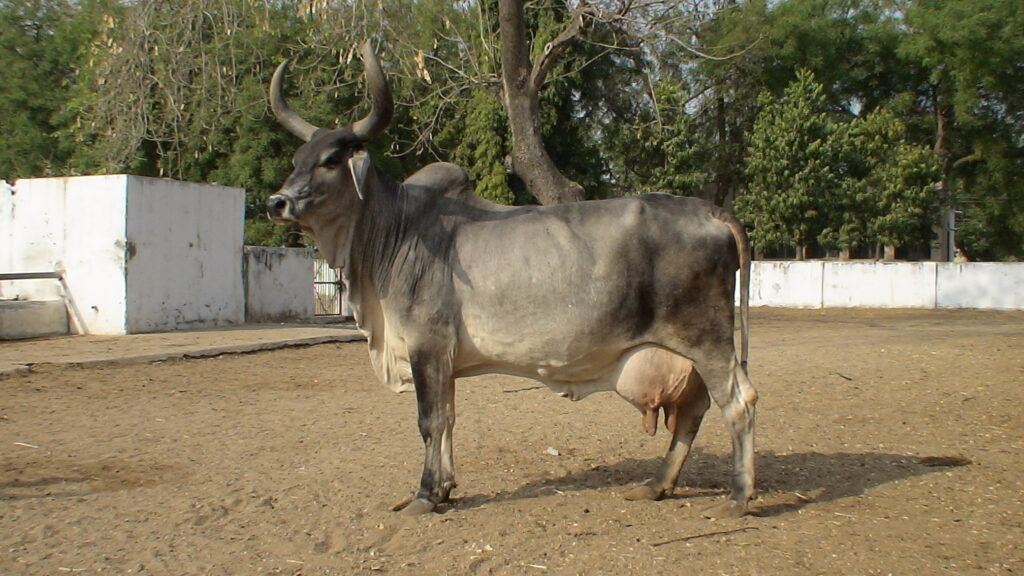India, with its rich agricultural heritage, has a deep-rooted connection to livestock. Livestock breeds in India have played a crucial role in shaping the country’s culture, economy, and agricultural practices. Understanding the importance of livestock is vital to appreciate the diverse breeds that have thrived in this land for centuries.Livestock, including cattle, goats, and buffaloes, hold immense significance in Indian agriculture. They provide dairy products, meat, and draft power, making them a crucial part of the agrarian economy. These animals also hold cultural and religious importance, with many indigenous breeds being revered in Hindu mythology and considered sacred.Indian livestock breeds also contribute significantly to the country’s economy. The dairy industry alone is a major player, with India being the largest milk producer in the world. The various breeds of cattle and buffaloes have made remarkable contributions to this sector, making it a vital source of income and employment for many.

Gir : Cow
The Gir cattle breed, native to the Gir forest region of Gujarat, holds an important place in Indian agriculture. These cattle are well-known for their resilience and adaptability to harsh climatic conditions. They have a distinct appearance, with a reddish-brown coat and prominent humps.The Gir breed has been traditionally valued for both milk and meat production. The milk of Gir cows is rich in fat content, making it ideal for dairy products like ghee and butter. Additionally, Gir cattle are excellent draft animals, contributing to plowing and transportation in rural areas. Conservation efforts have been underway to preserve and promote this versatile breed.
The Gir cattle, originating from Gujarat’s Gir forest, play a vital role in Indian agriculture. Renowned for their resilience in tough climates, they sport a distinctive reddish-brown coat and notable humps.
Valued for centuries, Gir cattle excel in both milk and meat production. Their high-fat content milk is prized for ghee and butter. Beyond dairy, they serve as exceptional draft animals, aiding in rural tasks like plowing and transportation.
Due to their significance, conservation initiatives aim to protect and boost this versatile breed. Preservation efforts target their genetic diversity, safeguarding their unique traits and adaptability. Promoting Gir cattle ensures sustained contributions to dairy, agriculture, and rural livelihoods, underscoring their cultural and economic importance.

Sahiwal Cow
The Sahiwal breed, hailing from Pakistan’s Sahiwal district, stands as a powerhouse for tropical farming in India. Thriving in hot, arid climates, these cattle excel in adapting to harsh conditions.
Characterized by a medium-sized frame and a reddish-brown coat, Sahiwal cattle are prized for their exceptional milk production. Their ability to yield abundant, high-quality milk is a hallmark trait. Their resilience and capacity for heightened productivity make them a favored selection among Indian farmers.
This breed’s adaptability to the Indian climate, coupled with their consistent milk output of excellent quality, positions them as an advantageous choice for dairy farming. Their prowess in enduring harsh environments while maintaining robust milk production establishes Sahiwal cattle as valuable assets in Indian agriculture.

Khillari Cow,
The Khillari cow, native to Maharashtra in India, stands out for its resilience in challenging conditions, especially during droughts. These medium-sized and robust cows have become emblematic for their ability to withstand harsh environments and continue to thrive.
While their milk yield is moderate compared to some high-yielding dairy breeds, Khillari cows excel in agricultural tasks. Their strength and adaptability make them excellent for draft work, contributing significantly to farm labor. They’re valued not just for their milk but also for their role in plowing fields and aiding in transportation, serving as reliable partners in agricultural activities.
Their exceptional ability to endure adverse conditions, including limited water and food resources, makes them a crucial asset in regions susceptible to drought and other environmental challenges. Farmers appreciate their resilience, as they provide consistent support even in harsh agricultural settings.
Efforts to conserve and promote the Khillari breed persist due to its unique adaptability, which is vital in sustaining farming communities. Their genetic resilience is recognized as a valuable component in preserving India’s agricultural heritage, safeguarding a breed that embodies adaptability, hardiness, and a rich cultural connection to the land.

Red Sindhi
The Red Sindhi, originating from Pakistan’s Sindh region, stands out for its adaptability to hot climates and exceptional milk production. This breed is easily recognized by its distinctive red coat, elongated horns, and sleek physique.
Highly coveted for its milk, the Red Sindhi cows produce a rich yield abundant in butterfat and protein. Their resilience and hardiness are evident in their ability to thrive in tropical environments, making them a preferred choice for dairy farming not only in their native region but also in various countries with similar climates.
Their capacity to endure hot climates, coupled with their remarkable milk production, positions them as valuable assets in dairy operations. The Red Sindhi breed’s ability to maintain high productivity in challenging environments further amplifies their significance in sustaining dairy farming in tropical regions worldwide.

Dangi Cow,
The Dangi cow, indigenous to Gujarat’s Dang district in India, stands out as a robust and adaptable breed thriving in hilly terrains. Despite being small to medium-sized, they exhibit exceptional resilience in rugged landscapes and manage well with limited resources.
While their milk yield is moderate, it’s highly valued for its richness. Beyond their role in dairy, their docile temperament makes them well-suited for draught work, contributing significantly to farm labor. Their ability to endure challenging conditions in mountainous regions makes them integral to traditional farming practices in hilly terrains.
Conservation efforts for the Dangi breed persist due to its cultural significance and its pivotal role in sustaining agriculture in challenging landscapes. Their adaptability to mountainous terrains and their contribution to preserving traditional farming methods mark them as invaluable assets worth conserving to maintain agricultural heritage and support sustainable practices in rugged regions.

Tharparkar Cow,
The Tharparkar cow, native to the arid Thar Desert spanning India and Pakistan, is celebrated for its endurance in harsh climates. Sporting a unique white or light gray coat and a medium build, it excels in surviving challenging conditions, delivering moderate milk yield despite scarce resources.
Remarkably adapted to scarcity, the Tharparkar sustains itself on minimal water and forage, showcasing exceptional resilience. Its significance goes beyond dairy production; it’s also prized for its draught capabilities, symbolizing survival in challenging environments.
Conservation endeavors persist for the Tharparkar cow due to its pivotal role in livelihoods and its genetic robustness. As an emblem of resilience, it plays a crucial role in preserving biodiversity and supporting communities in arid regions. Its adaptability to scarce conditions and its contribution to both dairy and draught purposes mark it as an invaluable asset in maintaining agricultural sustainability and supporting the resilience of communities in arid landscapes

Kankrej Cow,
The Kankrej cow, originating from Gujarat’s Kankrej region, stands as a sturdy breed highly prized for its adaptability to hot climates. Distinguished by its humped back and drooping ears, it excels in arid environments. These sizable and robust cattle are revered for their draught strength, ideal for agricultural labor.
Despite offering moderate milk yield, their resilience in coping with heat and limited resources renders them invaluable in harsh conditions. Persistent conservation efforts focus on preserving the breed due to its cultural significance, agricultural contributions, and genetic robustness. The Kankrej cow’s significance extends beyond its utility in rural livelihoods; it symbolizes the importance of indigenous breeds in India’s agricultural heritage.
Their ability to endure hot climates, serve as efficient draught animals, and provide sustenance despite scarcity underscores their significance in maintaining rural traditions, sustaining livelihoods, and safeguarding genetic diversity. Conservation initiatives underscore the breed’s role in preserving cultural identity and sustaining rural economies, emphasizing their importance in India’s agricultural landscape.
These cows breeds not only contribute significantly to milk production but also play a vital role in sustaining livelihoods in rural areas. Their ability to thrive in diverse climates and produce high-quality milk makes them indispensable in the Indian agricultural landscape. Additionally, buffaloes have cultural importance in various regions and are part of festivals, rituals, and traditions, showcasing their deep-rooted significance beyond their economic contributions.
